As you walk through the supermarket, you will see products such as Karaage and Tatsutaage. The two dishes look very similar as both are fried chicken dishes, so some people may think they are the same thing. However, they are actually completely different dishes. This time, we will explain about Karaage – its history, recipes, various types, etc. We will also differentiate between the two dishes so please check it out below!
What is Karaage?
Karaage refers to a Japanese cooking method using frying oil, and the cooked dish. Ingredients are lightly coated with flour or potato starch and fried in oil. In general, many people imagine karaage as an ingredient for fried chicken, but it is by no means limited. In Japan, fried fish, fried vegetables, and fried meat other than chicken are all fried.
Etymology

The etymology of karaage is interesting as it is a form of oil blanching originally from China so the term in Japanese is a homophone using either of two characters – 唐 a character denoting Chinese origin in the Edo period, and 空 meaning empty/nothing i.e. fried without batter. It’s the same with anything, but regardless of the origin of Japanese food, it seems that any food imported from overseas has “tou” or “kara” attached to its head.
Karaage History
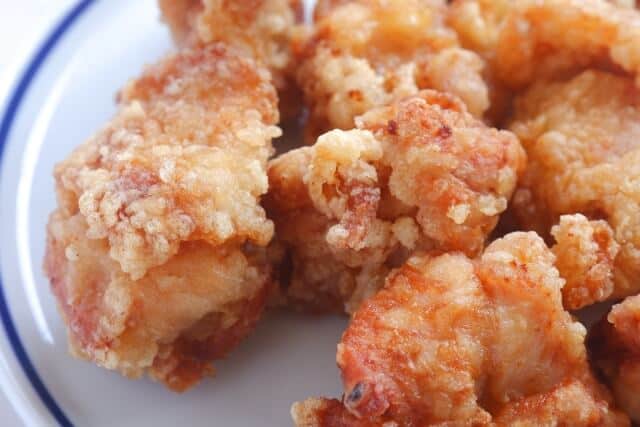
Where the Name Came From
The Japan Karaage Association writes “karaage” using the characters 唐揚げ (literally “Tang frying”), but the Japan Fried Food Association argues that 空揚げ (“empty frying”) is historically more accurate. This debate stems from how the dish evolved after arriving in Japan during the Edo period as part of fucha cuisine from China, eventually becoming something distinctly Japanese.
The frying technique itself came to Japan through envoys to Tang China back in the Nara period. People started calling it “karaage” using the character for Tang (唐). But there’s another theory—since “kara” also means “empty” in Japanese, some believe that’s where the character 空 came from instead. Records from the late 17th century Genroku period mention a frying method called “karaage” (written as 空揚). Here’s something interesting though: back then, karaage didn’t just mean fried chicken. People used the term for all sorts of fried foods—vegetables, meat, tofu. Even dishes that were fried and then simmered for flavor got called karaage.
When Chicken Entered the Picture
Chicken karaage as we know it started showing up in “Chinese-style” restaurants during the 1930s. In 1932, a place called Mikasa Kaikan in Tokyo’s Ginza district came up with chicken karaage as an inexpensive menu item to save their struggling business. It turned out to be a huge hit. Historical records show Japanese people started eating chicken in the late Edo period, but honestly, hardly anyone did back then.
The American Broiler Changes Everything
Things really changed in the later Showa period when broiler chickens arrived from America. These birds were bigger and easier to raise for meat compared to Japan’s native chickens, which made karaage accessible to regular people. The broiler’s rich meat and substantial size turned out to be perfect for frying. After World War II, with food shortages hitting hard, the government pushed for more poultry farms. Chicken dishes multiplied, with karaage leading the charge. At first, people probably said “chicken karaage” to distinguish it from other fried foods, but it got so popular that eventually “karaage” just meant chicken.
How Oita Prefecture Made It Their Own
The real karaage boom after the war traces back to two neighboring cities in Oita Prefecture: Usa and Nakatsu. Back in the 1950s, a restaurant called Rairaiken in Usa City put boneless karaage on their menu. From there, it spread like wildfire through Chinese restaurants across Usa and into nearby Nakatsu City. Eventually, a shop called Shosuke transformed itself into Japan’s first dedicated karaage takeout place. People loved how quick and affordable it was, and the trend quickly reached Nakatsu and beyond. These days, roughly 50 karaage specialty shops operate in that area, which even has its own karaage association.
Karaage Today
Every year in Nakatsu, more than 60 shops gather for the Karaage Festival, each bringing their unique take on the dish. You’ll find restaurants advertising “Nakatsu karaage” all over Japan now. Walk into any Lawson, FamilyMart, or 7-Eleven, and there it is—ready to grab and go. Food stalls across the country serve it too. The National Karaage Association works to preserve karaage traditions and craftsmanship, running an annual competition to crown the best karaage in the country. There’s even a dedicated training and certification program. If you want to become a certified “Karaagenist” and join the association, you’ve got to pass a written exam testing your karaage knowledge. That’s how seriously Japan takes its fried chicken.
Karaage Recipe
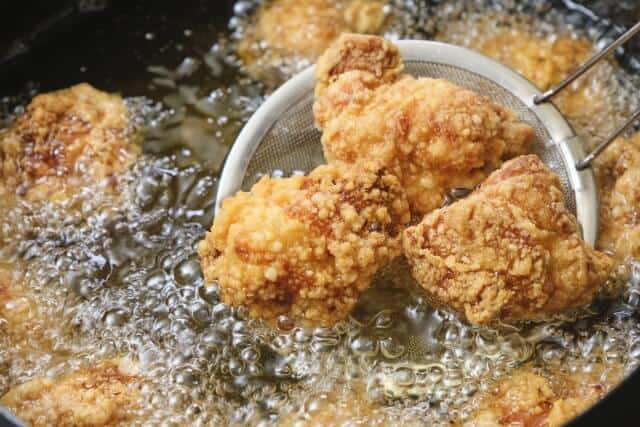
Karaage Ingredients
| Ingredients of Karaage for 2 persons | Measurements |
|---|---|
| Chicken thigh | 300-400g |
| Ginger | 10g |
| Katakuriko | 49g |
| Lemon | 10g |
| Frying oil | 30g |
| Soy Sauce | 28g |
| Sake | 14g |
How to make Karaage
First, cut the chicken thighs into easy-to-eat pieces (about 3-4 cm square), and grate the ginger with the skin on. Put the cut chicken in a bowl and add seasoning; soy sauce and sake.
Squeeze the grated ginger tightly and add only the ginger juice. The soaking time is 15-20 minutes. Mix upside down 2-3 times during the process. After 15 to 20 minutes, throw away the pickling juice. Lightly press the chicken with your hand or chopsticks and discard the marinating liquid, leaving a small amount of marinating liquid in the bottom of the bowl.
Add 3-4 tablespoons of potato starch and mix well until the mixture is sticky enough to cling to your hands. By mixing potato starch with some pickled juice remaining, soy sauce flavor will be on the fried chicken skin and the aroma will improve.
First, heat the frying oil to 160-170°C. The chicken is put in at a lower temperature. And take out all the chicken once. After resting, put all the chicken back into the oil and fry in hot oil until crisp for 1-2 minutes and remove. Drain off the excess oil, arrange it on a serving dish, and garnish with lemon wedges if desired.
Chicken parts of Karaage
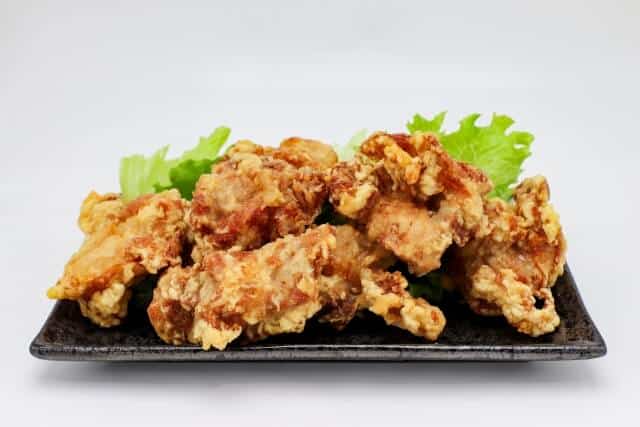
Thigh meat
Thigh meat is the most commonly used when making and eating karaage at home. By making it fried, the lean meat tightened and the fat melts moderately, so when you put it in your mouth and chew it, you can taste the juicy and delicious fat. When eating at home by cutting it into bite-sized pieces, you can eat it deliciously without uneven taste by cutting the fat and lean meat evenly.
Breast meat
Breast meat, which has less fat than thigh meat and costs a low price in the market, is a family favorite. Chickens move their chest muscles as well as their necks, so they are popular for their lean meat. By frying the firm meat in oil, the crispy batter and chewy texture are delicious. It has a bland taste, how well it cooks, and it becomes too hard over time.
Wings
There are many parts of the chicken such as chicken wings and chicken wings. There is a completely different taste depending on the part, and among them, fried chicken wings contain a lot of gelatin and fat. It has a crispy texture and the taste changes depending on the strength of the spice. It has many strong flavors and is loved mainly as a snack with sake.
Difference between karaage and tatsuta age
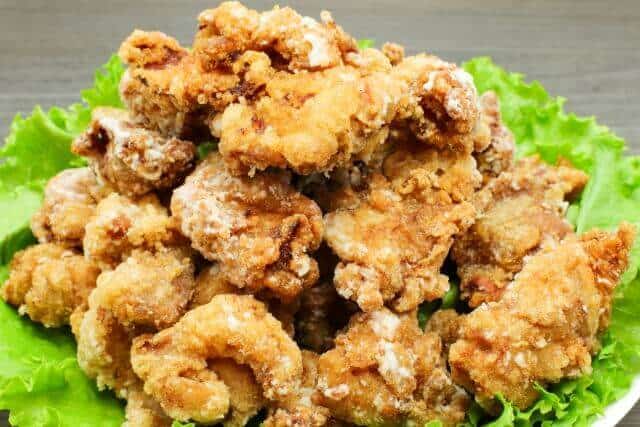
The mixture of the red color of the meat soaked in soy sauce and the white powder of the batter soaked thickly resemble the autumn leaves floating on the white waves of the Tatsuta River. In contrast to deep-fried chicken seasoned with ingredients such as wheat flour and potato starch and fried in oil, Tatsuta-age refers to fried with only potato starch. However, it seems that there are many cases where the name is different depending on the household, and even if only locals use potato starch, they called it karaage.
Seasoning regional differences
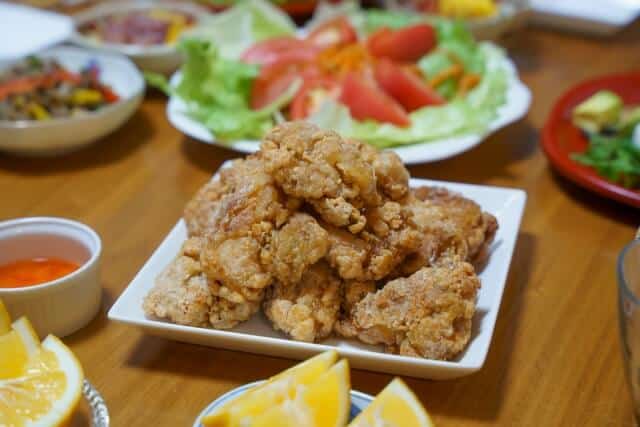
The soy sauce flavor, which more than half of the people prefer, seems to be gaining popularity, especially in eastern Japan. In Fukushima and Gunma, the rate is over 70%. On the other hand, salty fried chicken is popular in Kumamoto. Oita, which is famous as a sacred place for fried chicken, is also ranked as a region that likes the salty taste. In terms of seasoning, the flavor tends to be stronger in cold regions. In Niigata, some seasoned them with curry powder.
Types of Karaage batter

Wheat Flour
If you dip it in flour and fry it, it will be crispy when freshly fried, but will become moist when cooled. Since the raw material is wheat, the flour has a delicious flavor. You can mix the same amount of potato starch with wheat flour, it will be crispy and fragrant when freshly fried, and delicious even after it cools down for a while.

Potato starch
This one has coarse grains, so if you dip it in the batter and fry it, the white color will remain as it is. If you cover it with plenty of it, it will have a crunchy and wild texture, and if you cover it lightly, it will have a crunchy texture.

Cornstarch
The raw material is corn starch. Because the particles of the flour are finer than potato starch, the coating is thin and the oil drains off easily. It’s crispy like potato starch and has a refreshing taste

Rice flour
The rice flour used to grind non-glutinous rice has a very fine texture, and the batter sticks to it the thinnest among the four types of flour. It doesn’t absorb oil easily, so it’s crisp and light, so you can eat as much as you like.
Where to buy Karaage
Gaburi Chicken (がブリチキン)
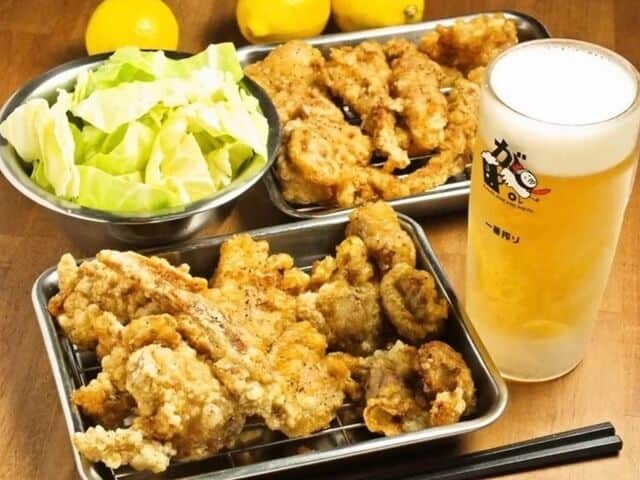
“Gaburi Chicken” in Takadanobaba is a fried chicken specialty store that originated in Nagoya. The deep-fried chicken that we are so proud of has been awarded a gold medal for 4 consecutive years by the Japan Karaage Association. There aren’t many restaurants where you can choose which parts of fried chicken you want to eat. The bone-in chicken grilled with a secret sauce looks delicious.
YUKARI (からあげ縁 浅草総本店)
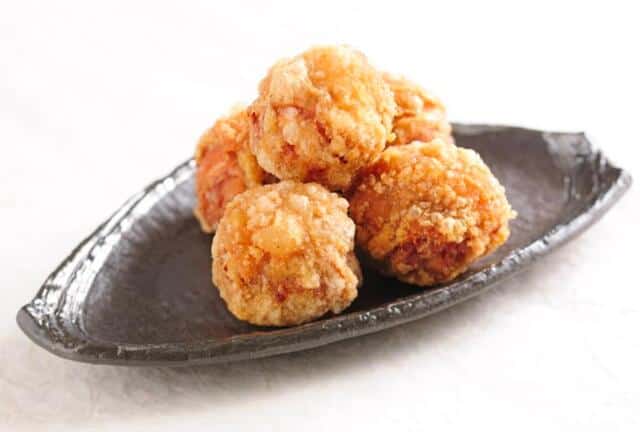
The store is proud of its special deep-fried chicken that they marinated for a day in a secret sauce that does not use any garlic or ginger. The fried chicken starts after you place your order, so you can always enjoy freshly fried chicken. There are some seasonal items, so you can enjoy the original fried chicken whenever you go.
Oshu Iwai (秋葉原本店)
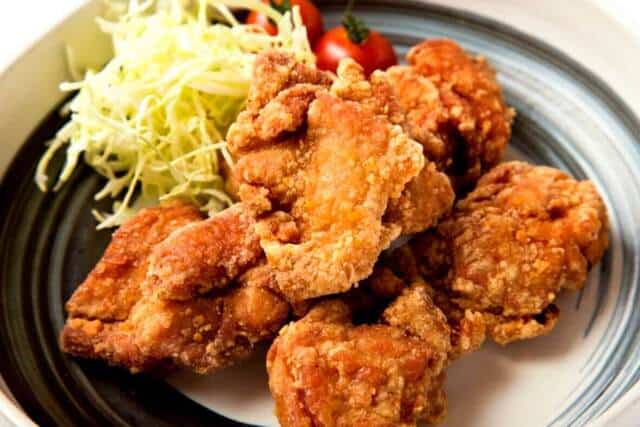
The most important thing is that the store uses chickens that they raised in a rich natural environment, with specially formulated feed, and with the highest priority on health. This chicken has no odor and is attractive for its texture and umami. The deep-fried chicken is deep-fried at a high temperature and slowly soaked in a garlic-free ginger sauce. Every time you chew, the taste of the sauce and the chicken itself spreads.
Final Thoughts
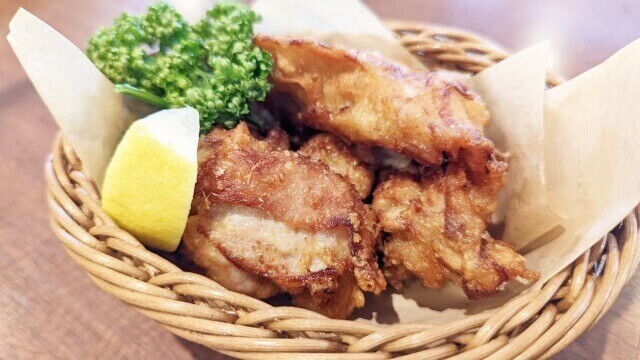
Karaage is a dish where ingredients are dipped in a batter and fried in oil. The ingredients are marinated beforehand, covered with flour or katakuriko, and fried. Its intense flavor and soft crunch make karaage stand out from its competition.
There are other fried dishes from Japan such as Tempura and Kakiage, and many more that you can have during your visit to Japan.
Japanese Karaage FAQ
What is Karaage?
It is Japanese deep-fried chicken. Chefs marinate bite-sized pieces before frying them crisp.
How does it differ from Western fried chicken?
Karaage usually uses boneless meat, and the flavor comes from the marinade, not the batter.
What is the coating made of?
Most recipes use wheat flour, potato starch, or a mixture of both for a crunchy texture.
What does it taste like?
It tastes savory with strong notes of soy sauce, garlic, and ginger from the marinade.
Where can I buy it?
You find it everywhere, from convenience stores (Konbini) and supermarkets to Izakaya pubs.
Should I squeeze the lemon on it?
Be careful. Some people dislike lemon, so you should ask the table before squeezing it over the whole dish.
Do they use breast or thigh meat?
Most shops use juicy thigh meat (Momo), but some use lighter breast meat (Mune).
Is it spicy?
Generally, no. However, you can find “Red” or “Spicy” versions that use chili powder.
What is “Nakatsu Karaage”?
Nakatsu City in Oita Prefecture is famous as the “Sacred Place of Karaage” with many specialized shops.
Is it gluten-free?
No. The marinade contains soy sauce (wheat), and the batter often contains wheat flour.
Do I need a dipping sauce?
No. The meat is already flavorful, though some people like to add mayonnaise.
Is the skin included?
Yes. The skin becomes very crispy when fried and adds a rich flavor.
What is “Nankotsu”?
It is fried chicken cartilage. It has a very crunchy, gritty texture perfect for beer.
Is it good cold?
Yes. Karaage stays tasty even at room temperature, making it a staple item in Bento boxes.
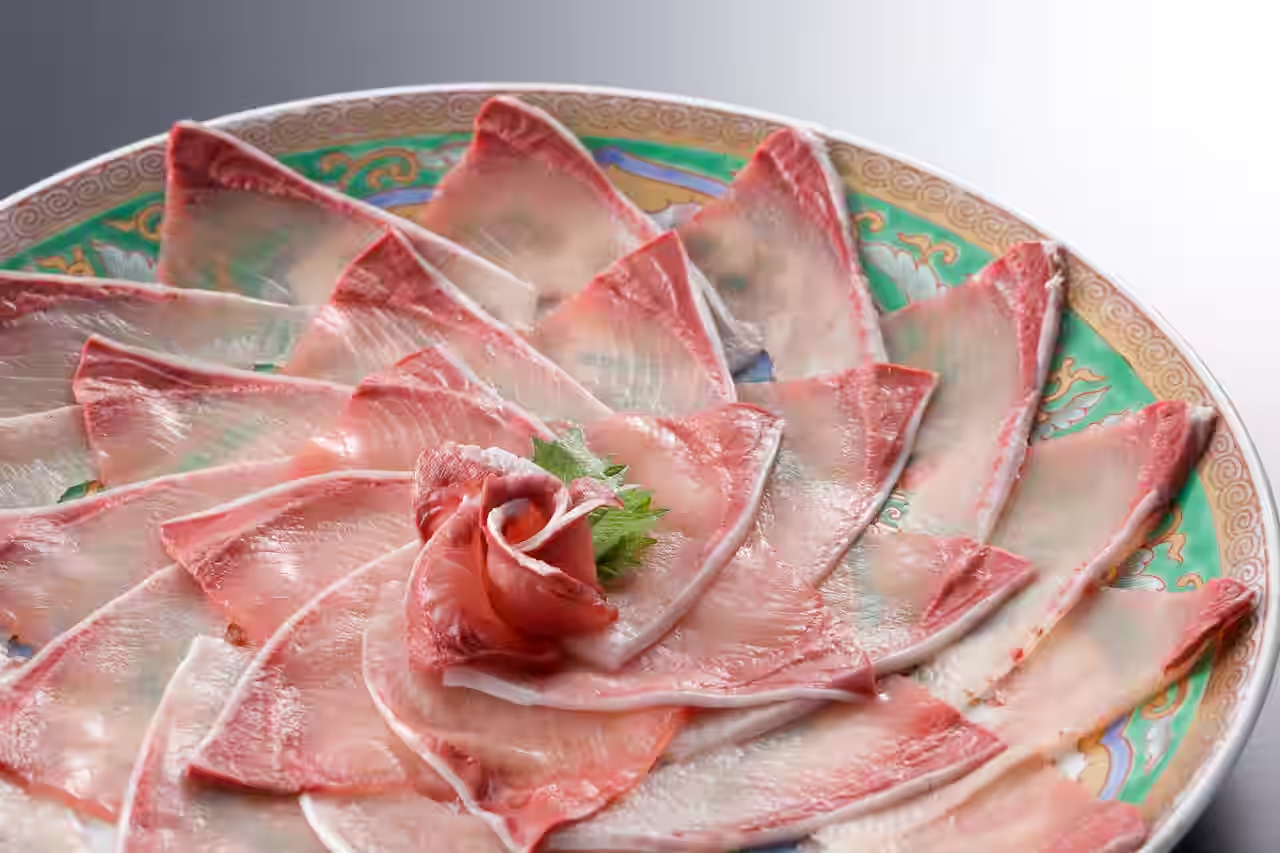
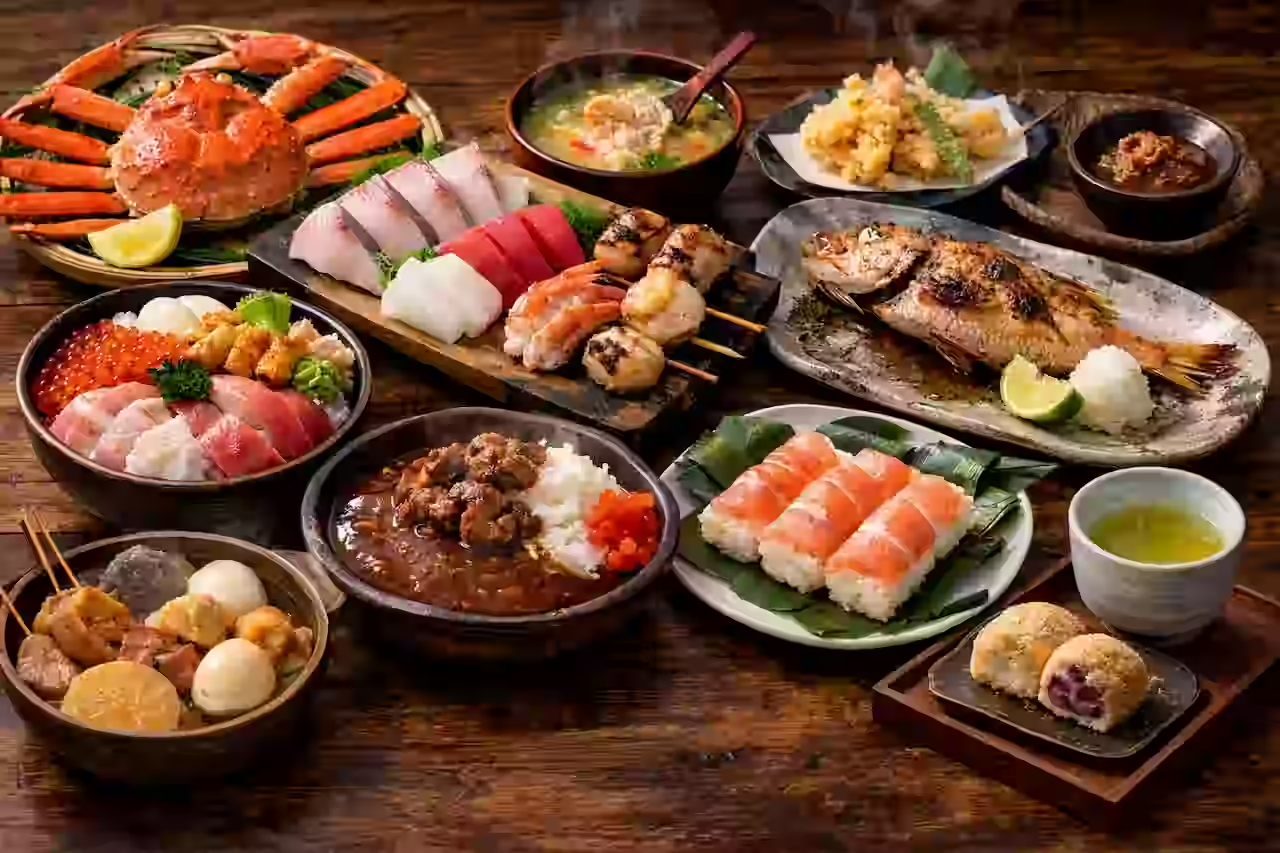
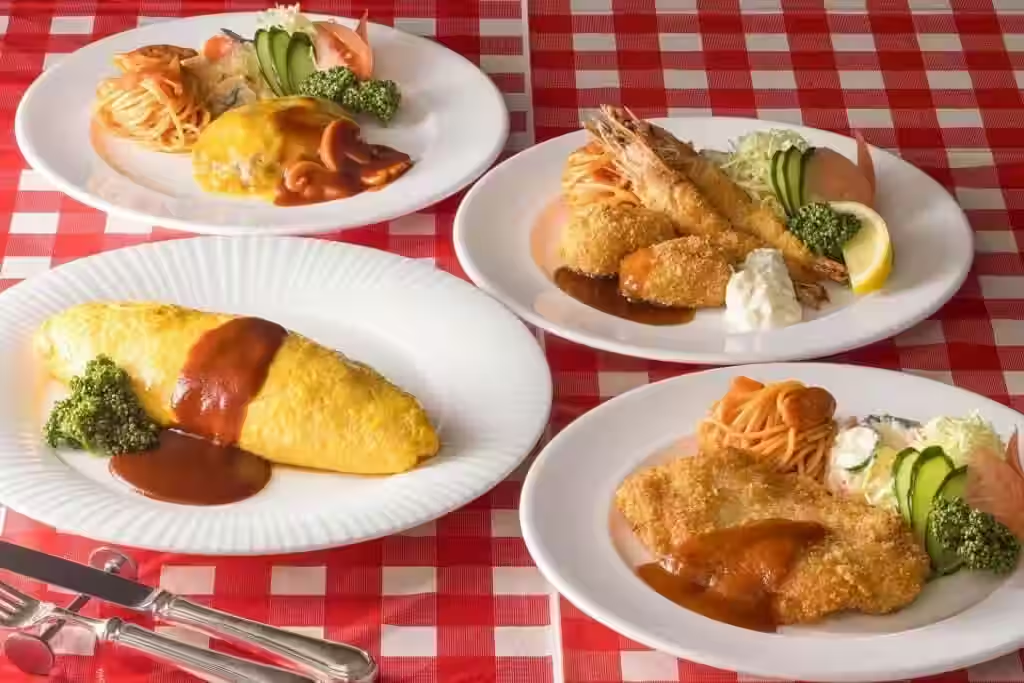
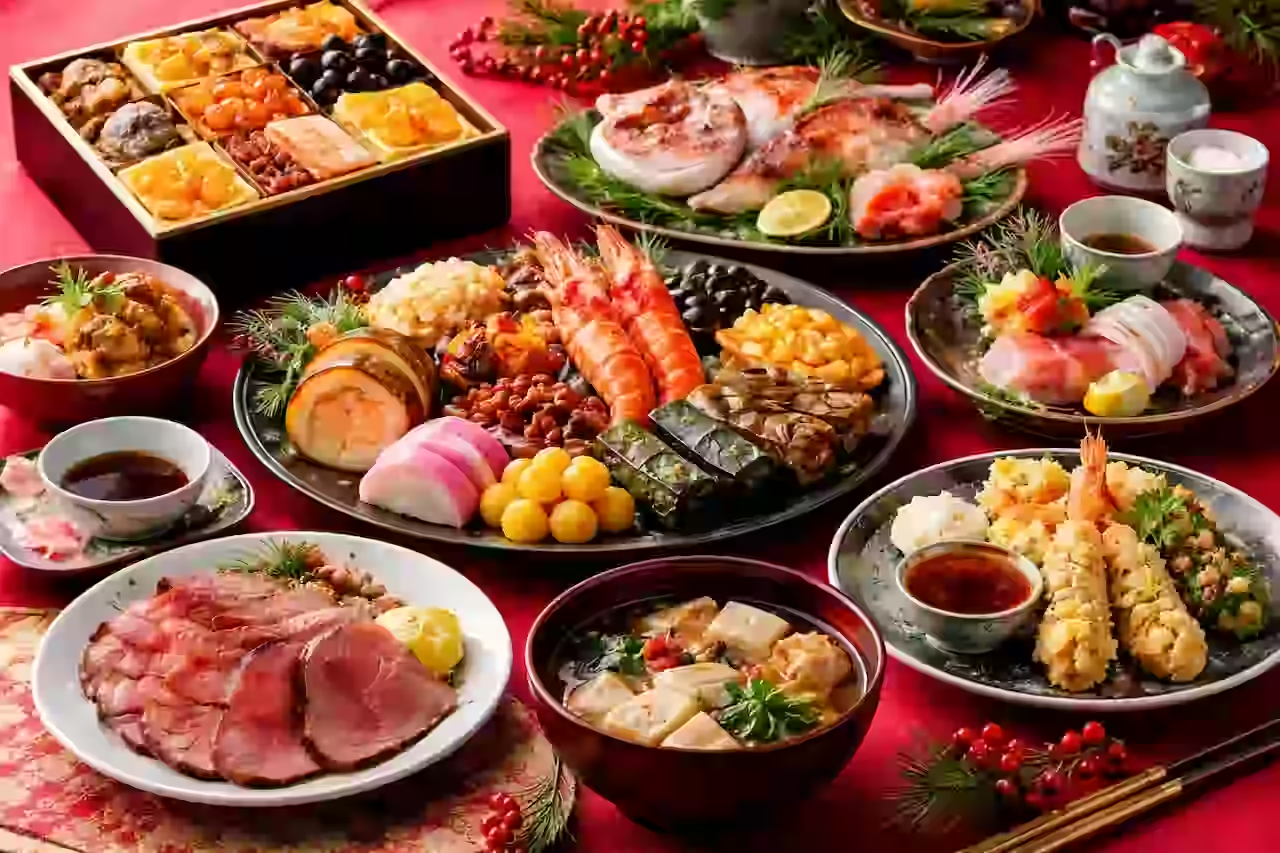
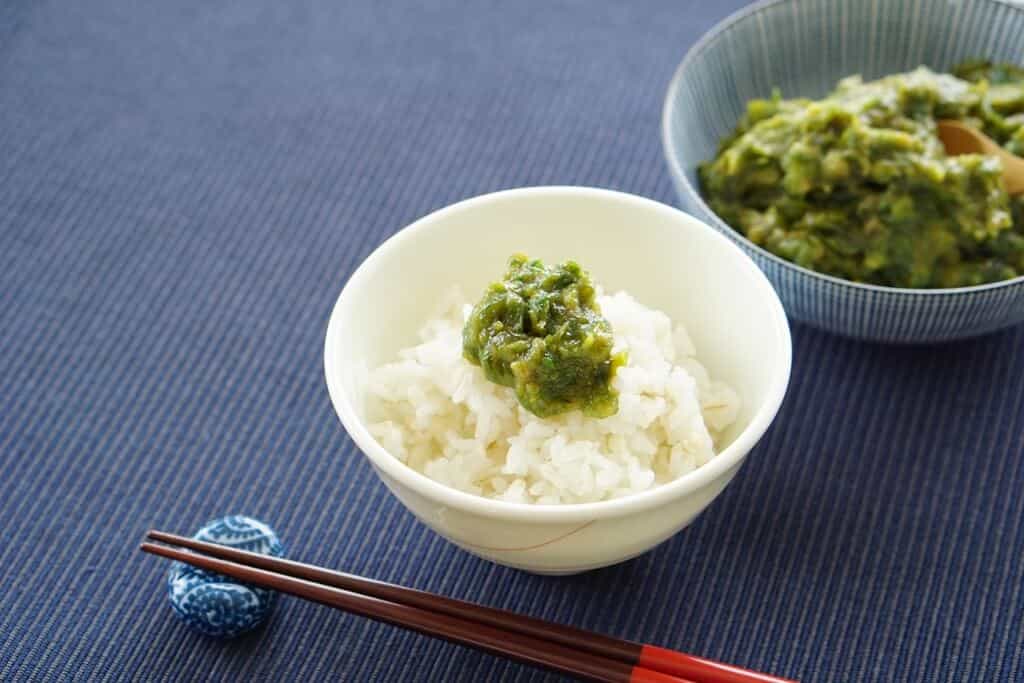

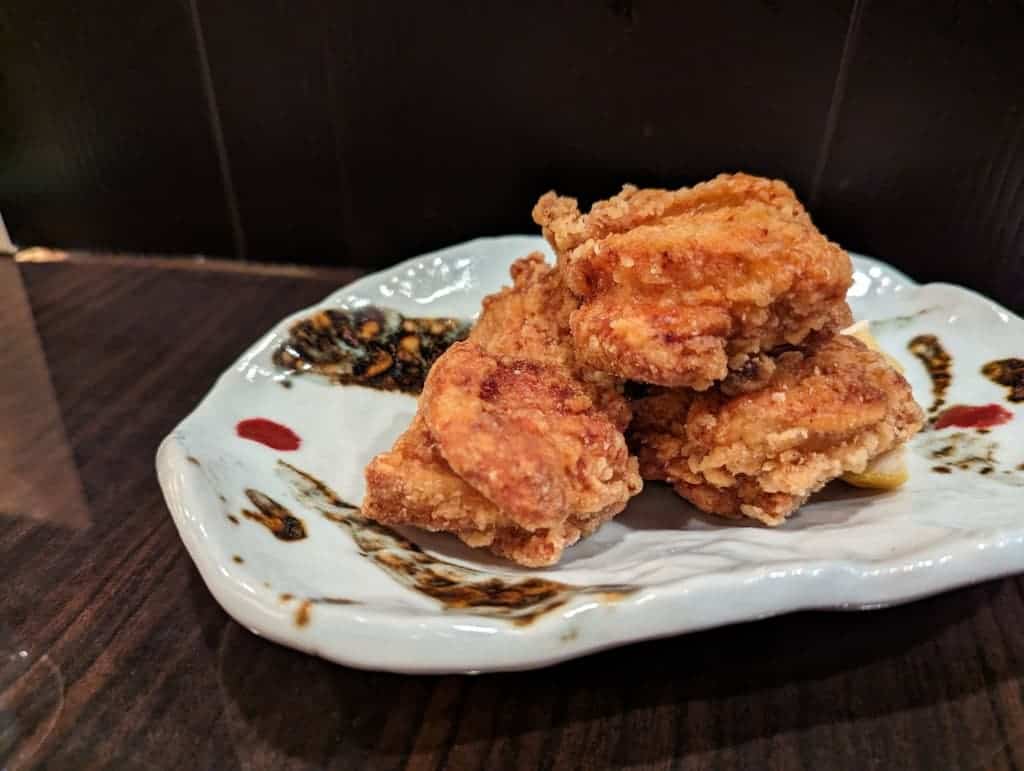
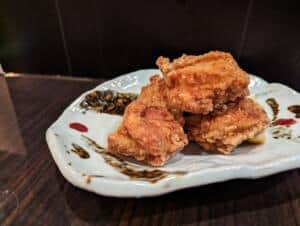
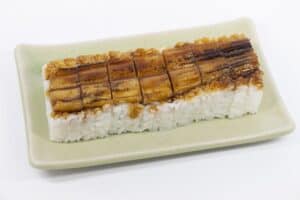
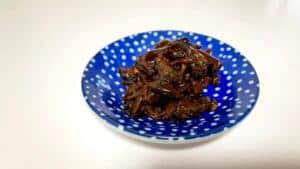
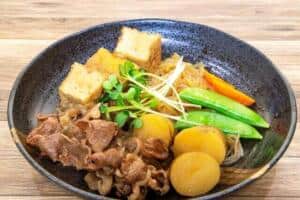
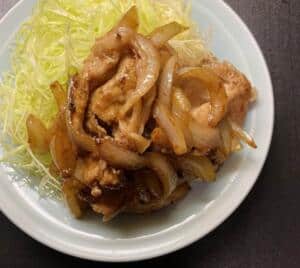
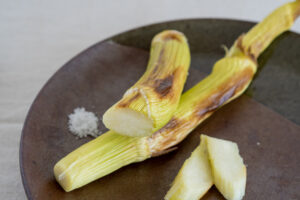
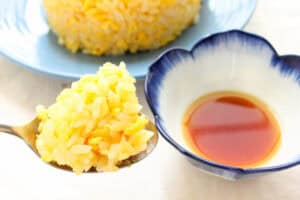
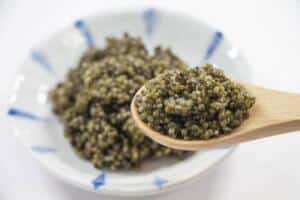
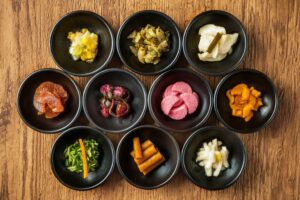
Comments